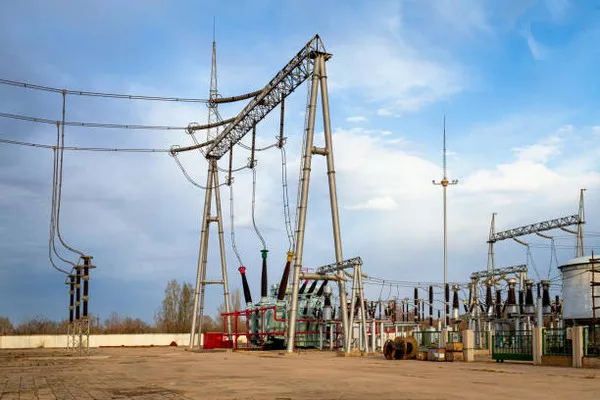In the realm of electrical engineering, transformers stand as indispensable devices facilitating the transmission and distribution of electricity. Among various types, the auto transformer holds a significant place due to its efficiency and versatility in voltage regulation. This article delves into the intricate workings of auto transformers, elucidating their mechanisms, applications, advantages, and potential drawbacks.
Introduction to Auto Transformers
An auto transformer, a variant of the conventional transformer, operates on the principle of mutual induction. It comprises a single winding with two or more electrical connections, differentiating it from the dual-winding construction of standard transformers. The key distinguishing feature of an auto transformer is that a portion of the winding acts dually as both primary and secondary windings.
Mechanism of Operation
The operation of an auto transformer hinges on the principle of electromagnetic induction. When an alternating current (AC) passes through the primary winding, it induces a magnetic flux in the iron core, which, in turn, causes an electromotive force (EMF) to be induced in the secondary winding. In an auto transformer, however, a portion of the winding serves as both primary and secondary, resulting in a shared magnetic flux path.
As the primary voltage is applied, a fraction of this voltage is directly transferred to the secondary circuit via the shared winding, while the remaining voltage is induced in the secondary winding. This process facilitates the adjustment of output voltage relative to the input voltage, making auto transformers highly adaptable for voltage regulation purposes.
Construction of Auto Transformers
Auto transformers exhibit a simpler construction compared to conventional transformers due to the single winding design. The winding is typically wound around a laminated iron core, which minimizes energy losses through eddy currents and enhances the efficiency of the transformer.
The core material, often composed of high-permeability alloys or silicon steel, serves to concentrate the magnetic flux generated by the current flow in the winding. This concentration of flux ensures efficient energy transfer between the primary and secondary circuits.
Applications of Auto Transformers
Auto transformers find diverse applications across various industries owing to their efficiency, compact design, and voltage regulation capabilities. Some common applications include:
Voltage Regulation: Auto transformers are frequently employed in electrical distribution systems to regulate voltage levels, ensuring consistent voltage supply to consumers despite fluctuations in the input voltage.
Motor Starting: In industrial settings, auto transformers are utilized to initiate the operation of large induction motors by providing a reduced voltage during the starting phase. This reduces the inrush current and prevents damage to the motor windings.
Power Transmission: Auto transformers play a crucial role in long-distance power transmission, where they are used to step-up or step-down voltage levels efficiently, thereby minimizing energy losses during transmission.
Variable Speed Drives: Auto transformers are integral components in variable speed drives, where they enable smooth control of motor speed by adjusting the voltage supplied to the motor.
Audio Systems: In audio applications, auto transformers are employed in impedance matching circuits to optimize power transfer between audio components, thereby improving sound quality and fidelity.
Voltage Conversion: Auto transformers can be utilized for converting voltage between different levels in electrical equipment and appliances, making them versatile solutions for diverse voltage conversion requirements.
Advantages of Auto Transformers
Auto transformers offer several advantages over conventional transformers, including:
Compact Design: The single winding construction of auto transformers results in a more compact and lightweight design compared to conventional transformers, making them ideal for applications with space constraints.
Efficiency: Auto transformers exhibit higher efficiency levels due to reduced copper losses and magnetic flux leakage, resulting in lower energy wastage and operational costs.
Cost-Effectiveness: The simplified construction of auto transformers translates to lower manufacturing costs, making them a cost-effective solution for voltage regulation and power transmission applications.
Voltage Regulation: Auto transformers provide precise voltage regulation capabilities, allowing for fine adjustments in output voltage levels to meet specific application requirements.
Reduced Voltage Drop: Due to the direct transfer of voltage between the primary and secondary circuits, auto transformers experience lower voltage drops compared to conventional transformers, ensuring efficient power transmission over long distances.
Improved Power Quality: Auto transformers contribute to improved power quality by minimizing voltage fluctuations and harmonics in electrical systems, thereby enhancing the reliability and performance of connected equipment.
Potential Drawbacks and Considerations
While auto transformers offer numerous benefits, they also present certain limitations and considerations, including:
Limited Isolation: Unlike conventional transformers, auto transformers provide limited isolation between the primary and secondary circuits, which may pose safety concerns in certain applications where isolation is critical.
Voltage Regulation Range: The voltage regulation range of auto transformers is limited by the turns ratio of the winding, which may restrict their suitability for applications requiring wide voltage variations.
Fault Tolerance: Auto transformers may be more susceptible to faults such as short circuits and winding insulation failures compared to conventional transformers, necessitating adequate protective measures and maintenance practices.
Compatibility: Compatibility issues may arise when using auto transformers with sensitive electronic equipment or devices that require galvanic isolation, as the shared winding configuration does not provide complete electrical isolation.
Overloading Concerns: Care must be taken to avoid overloading auto transformers beyond their rated capacity, as this can lead to overheating, insulation breakdown, and potential damage to the transformer.
Harmonic Distortion: In applications where non-linear loads are present, auto transformers may exacerbate harmonic distortion in the electrical system, requiring additional filtering and mitigation measures to maintain power quality.
Conclusion
Auto transformers stand as indispensable components in modern electrical systems, offering efficient voltage regulation, compact design, and versatility across a wide range of applications. By understanding the inner workings, applications, advantages, and considerations associated with auto transformers, engineers and technicians can make informed decisions regarding their deployment and integration into diverse electrical systems. Despite certain limitations and drawbacks, the benefits offered by auto transformers make them indispensable assets in the realm of electrical engineering, driving innovation and efficiency in power transmission and distribution technologies.

